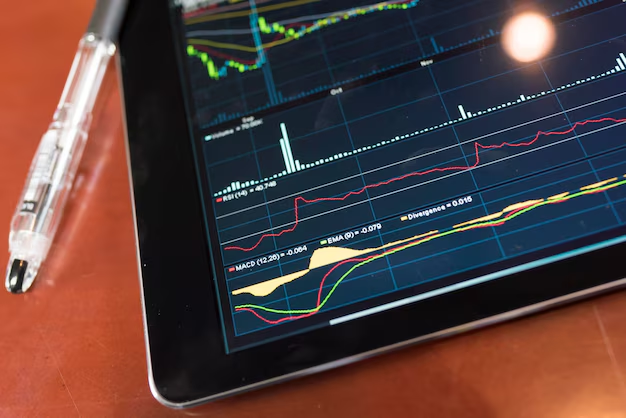How to Buy ETFs: A Complete Guide to Investing in Exchange-Traded Funds
Exchange-Traded Funds (ETFs) offer a versatile and efficient way to diversify your investment portfolio. Whether you're a seasoned investor or a beginner in the financial markets, understanding how to buy ETFs can enhance your investment strategy and potentially lead to better financial outcomes. This guide explores everything you need to know about ETFs, from the basics of what they are to the step-by-step process of investing in them.
📈 Understanding ETFs: What Are They?
ETFs Defined: ETFs are investment funds that hold a collection of assets, such as stocks, bonds, or commodities, and are traded on stock exchanges, similar to individual stocks. They provide exposure to a wide array of markets, sectors, or investment strategies, allowing investors to diversify their portfolios.
Key Features of ETFs
- Diversification: ETFs typically hold multiple securities, reducing the risk associated with individual stocks.
- Liquidity: ETFs are bought and sold on major stock exchanges, offering investors the ability to trade throughout the market day.
- Cost Efficiency: Many ETFs have lower expense ratios compared to mutual funds, making them cheaper options for investors.
- Transparency: Most ETFs disclose their holdings daily, providing investors with visibility into their investments.
🛠️ How to Buy ETFs: Step-by-Step Guide
Step 1: Determine Your Investment Goals
Before diving into the ETF market, clarify your financial goals. Do you want long-term growth, income generation, or capital preservation? Understanding your objectives will help in selecting the appropriate ETFs.
Step 2: Open a Brokerage Account
To buy ETFs, you'll need a brokerage account. Consider the following when choosing a broker:
- Fees: Look for brokers with low trading fees and account maintenance charges.
- Platform Features: Consider the ease of use, research tools, and customer support offered by the brokerage.
- ETF Selection: Ensure the broker provides access to a broad range of ETFs.
Step 3: Research and Select ETFs
Selecting the right ETFs involves thorough research:
- Expense Ratio: Lower expense ratios mean more of your money is invested rather than paid in fees.
- Performance History: Analyze past performance to gauge how the ETF has fared in different market conditions.
- Underlying Assets: Understand what securities the ETF holds to ensure they align with your investment strategy.
Step 4: Place an Order
Once you've selected your ETFs, it’s time to purchase:
- Order Type: Decide between a market order (buys at current prices) or a limit order (buys at specified prices).
- Quantity: Choose how many shares to buy based on your budget and investment strategy.
Step 5: Monitor and Rebalance Your Portfolio
Investing is not a one-time action. Regularly monitor your ETF investments and rebalance your portfolio as needed—adjusting your allocations to stay in line with your financial goals.
🌐 Types of ETFs: Diversify Your Investment Strategy
Equity ETFs
Equity ETFs invest in stocks, offering exposure to broad markets or specific sectors (e.g., technology, healthcare). They’re suitable for investors seeking capital appreciation.
Bond ETFs
These ETFs invest in bonds or other fixed-income securities and are ideal for those looking for regular income through interest payments.
Commodity ETFs
Commodity ETFs provide exposure to physical goods like gold, oil, or agricultural products, enabling diversification outside traditional equities and bonds.
International ETFs
International ETFs offer access to foreign markets, allowing investors to diversify geographically and capitalize on global economic growth.
🚀 Benefits of Investing in ETFs
- Flexibility: With ETFs, you can easily switch between different sectors or asset classes to adapt to changing market conditions.
- Tax Efficiency: ETFs may offer tax advantages compared to mutual funds due to their unique structure and trading mechanism.
- Accessibility: They offer exposure to various asset classes, including alternative investments, making them accessible to all types of investors.
📊 ETF Investment Strategies
Passive vs. Active ETFs
- Passive ETFs: Track an index, providing broad market exposure with low costs.
- Active ETFs: Managed by fund managers who make investment decisions with the goal of outperforming benchmarks.
Sector and Thematic ETFs
These focus on specific sectors or investment themes like renewable energy, technological innovation, or healthcare advancements, catering to distinct investor interests.
⚠️ Risks Associated with ETFs
While ETFs offer several benefits, they also come with risks:
- Market Risk: ETFs are subject to market fluctuations, which can affect their value.
- Liquidity Risk: In less-traded ETFs, buying or selling can be more challenging, potentially impacting prices.
- Tracking Error: There is a possibility that an ETF may not accurately track its benchmark index.
🔍 Evaluating ETF Performance
When analyzing how well an ETF is performing, consider:
- Net Asset Value (NAV): Represents the value of the ETF’s underlying assets.
- Tracking Difference: The divergence between the ETF’s performance and its benchmark.
- Distributions: Assess whether the ETF provides regular income through dividends.
🗂️ Sample Portfolio Strategies with ETFs
Beginner Portfolio
- Equity ETFs: 60%
- Bond ETFs: 30%
- Commodity ETFs: 10%
Growth-Focused Portfolio
- Equity ETFs: 80%
- International ETFs: 20%
Income-Oriented Portfolio
- Bond ETFs: 70%
- Dividend ETFs: 30%
📋 Key Takeaways
- 🔍 Know Your Goals: Understand your investment objectives before choosing ETFs.
- 💰 Choose Carefully: Evaluate fees, performance, and holdings when selecting ETFs.
- 📊 Monitor & Adjust: Regularly review your investments to ensure they align with your goals.
In conclusion, buying ETFs can be an effective strategy for achieving diverse investment goals, from growing your wealth to obtaining regular income. By understanding the types of ETFs, how to buy them, and the factors to consider, you can make informed investment decisions that align with your financial objectives. Always remember to keep an eye on market trends and adjust your ETF investments as needed to meet your evolving financial needs.
